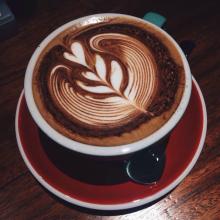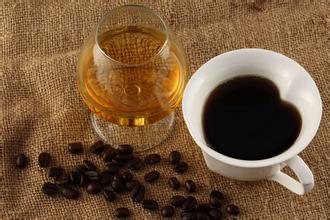Ethiopia Sidama coffee beans flavor description processing method Variety characteristics Introduction

Introduction to the method of describing the Flavor of Coffee production area in Sidamo, Ethiopia
These four major planting systems are distributed in the following nine major producing areas of Ethiopia: Jinma, Sidamo, Yegashifi, Hara, Lim, Iruba, Gimbi (Lekanti), Tibby, and Bebeca. On the whole, the flavor of each producing area has its own characteristics, basically, the beans in West Tiebi, Bebeca, Irubabo and Tana Lake in the northwest are obviously larger, the game is heavier but the fruit acidity is lower. On the other hand, the Lim in the middle, Yejasuefei and Sidamo in the middle and south, with rich fruit flavor, flower and sour aroma, are relatively stable in quality. Hara in the east has both the game of the west and the fruit of the south-central part, but there is a big difference between the good and the bad.
The genes of Ethiopian ancient excellent varieties are very complex, coupled with the multiple treatments of sun exposure, water washing and semi-washing, so the flavor presented is complex and changeable. It may not be an exaggeration to call it the flavor of king.
Yejia Xuefei (boutique producing area): 1800m-2000m above sea level | Pastoral coffee system |
Yega Xuefei is affiliated to the Sidamo producing area, which is separated separately because of its unique flavor. In addition to the small town of Yega Xuefei, it also includes three by-product areas around Wenago, Kochere, Gelena and Abaya. Therefore, Yirgacheffe A, Wenago A, Kochere An and Gelena/AbayaA will be more expensive than B of the same name in the new Yega Sheffield rating system. In addition to washing and tanning, the recently launched semi-washed Yega Xuefei is also worth a try.
Sidamo (boutique producing area): 1400-2200m above sea level | Pastoral coffee system |
The flavor is similar to Yejiaxuefei, Sidamo, which is delicately washed or sunburned, has the same fragrance of flowers and oranges, and is worth as much as Yega Xuefei. The varieties in the two producing areas are similar, with medium-sized beans but also small seeds of dwarf plants, which farmers often sell separately. Common Kurmie, poor disease resistance; Wolisho; tall and strong; Deiga, medium tree shape, these three species are the main force of the boutique tanning series Beloya and Aretha.
Liam (boutique producing area): 1200m to 2000m above sea level | Coffee system in pastoral, forest, semi-forest and planting fields |
The output is relatively small, and it is mainly exported to Europe and the United States, but it is not easy to buy in Taiwan, but it is very popular in Europe and the United States. there are three treatment methods: washing, tanning and semi-washing. Liam's body will be significantly less viscous, and the floral and citrus flavors will be inferior to those of Yegashifi and Sidamo, but with a hint of grass and black sugar, and bright acidity.
Hara (boutique producing area): 1500-2400 m above sea level | Pastoral coffee system |
Hara exclusive sun, is an ancient city in the east, but the city does not grow coffee, the so-called Hara coffee refers to the coffee produced by Haraji high and low in the Great Hara area. As the annual rainfall is only 1000 mm, all of them are treated in the sun. Hala caffeine is famous for its special aroma, which is typical of the early morning flavor in ancient times. she is tied with Yegashifi [double star].
If Hara's defective beans can be picked out, it is easy to drink berry aromas with slightly pleasant fermented aromas. However, due to various factors, the quality of Hala coffee is unstable in recent years, and the grading system is not true, so be sure to test or try it when you buy it.
Ethiopia fought a two-year trademark battle with coffee giant Starbucks over the trademark of Sidamo in 2005, because Starbucks applied for Sidamo as a trademark as early as 2004. when Ethiopian farmers recovered only $1.45 a pound, beans from Sidamo were sold by Starbucks at $26 per pound. From this we can see how profitable Starbucks is. However, under the pressure of international public opinion, Starbucks finally gave up the competition for the Sidamo trademark in 2007. Nowadays, the trademark rights of Yejasuefei, Harald and Sidamo are all in Ethiopia's own hands, and the hard-working farmers have been rewarded accordingly. in order to continuously deliver the fine coffee produced here to coffee lovers around the world, the grading standard of Sidamo is according to the defect rate, and the less the number of defective beans in the same weight standard, the better the quality and the higher the grade! Generally divided into two and three levels (G2, G3), water-washed Sidamo because the treatment process is more perfect than the sun, so most of the G2 level exports are more. Most of the sun-processed coffee is grade 3 or grade 4 or grade 5 (G3, G4, G5). In many cases, level four coffee will be marked as level five, but that is to reduce taxes. The current classification is not very uniform and a bit messy, but in any case you can see that the one marked as G1 must be the highest level of Sidamo, whether it is washed or Sidamo, Harald and Yegashafi belong to the same country of Ethiopia. but each has a different flavor. Unlike Yega's clean, lively and vibrant, Harald has a mixed taste, but the special berry wine makes it more ripe and steady. Sidamo is more neutral than Yejia Xuefei in taste, especially like Sichuan cuisine and Hunan cuisine in our country. they have both similarities and differences. traditional Sidamo uses the ancient sun treatment method, slightly fermented fruit aroma, with more intense nutty aroma and slightly Yega flavor acidity, sour is relatively bright but fleeting, not thick, with a comfortable smooth taste That is, what we often describe as having a moderate sweet and sour taste there are three well-known producing areas in Ethiopia, Harald (Harar), Yiragcheffe (Yiragcheffe) and Sidamo (Sidamo). Sidamo is located in the highlands of southern Ethiopia adjacent to Kenya, the industry is mainly agricultural, and coffee is mainly grown in the area around the East African Rift Valley (Great Rift Valley), between elevations between 1400m-2000m. Cedamo's coffee flavor is very diversified, because countless native varieties are planted in different small producing areas, encounter different soils and different microclimates, resulting in obvious differences and characteristics of coffee produced in each small producing area. As we know Yega Xuefei, it is a high-altitude by-product area in the Xidamo area, although it belongs to Sidamo geographically. But it has a very distinct self-style, but it becomes an independent brand and is widely praised.
Important Notice :
前街咖啡 FrontStreet Coffee has moved to new addredd:
FrontStreet Coffee Address: 315,Donghua East Road,GuangZhou
Tel:020 38364473
- Prev

Colombian Coffee Lanhuihuila Coffee Bean Flavor description Variety taste treatment
The main varieties of Colombian coffee are small grains of coffee. Plants are small trees or large shrubs, 5-8 m tall, usually much branched at base; old branches gray-white, nodes dilated, young branches glabrous, compressed. Leaves thinly leathery, ovate-lanceolate or lanceolate, 6-14 cm long and 3.5-5 cm wide, tip long acuminate, acuminate part 10-15 mm long, base cuneate or slightly obtuse, rarely rounded, entire or
- Next

Introduction to the Variety characteristics of Flower Butterfly Coffee Bean Flavor description in Bogut Jade Manor, Panama
Origin: Panamanian Poquet Cooperative: CASA RUIZ Caesar Louis Manor: La Berlina Estate Berina altitude: 1500-1700 treatment: washed varieties: Geisha Rose Summer aroma: mango, apricot, orange and other complex fruit flavors taste: cocoa finish, clean, elegant, medium thick body brewing suggestion: 93 water temperature hand coffee
Related
- Detailed explanation of Jadeite planting Land in Panamanian Jadeite Manor introduction to the grading system of Jadeite competitive bidding, Red bid, Green bid and Rose Summer
- Story of Coffee planting in Brenka region of Costa Rica Stonehenge Manor anaerobic heavy honey treatment of flavor mouth
- What's on the barrel of Blue Mountain Coffee beans?
- Can American coffee also pull flowers? How to use hot American style to pull out a good-looking pattern?
- Can you make a cold extract with coffee beans? What is the right proportion for cold-extracted coffee formula?
- Indonesian PWN Gold Mandrine Coffee Origin Features Flavor How to Chong? Mandolin coffee is American.
- A brief introduction to the flavor characteristics of Brazilian yellow bourbon coffee beans
- What is the effect of different water quality on the flavor of cold-extracted coffee? What kind of water is best for brewing coffee?
- Why do you think of Rose Summer whenever you mention Panamanian coffee?
- Introduction to the characteristics of authentic blue mountain coffee bean producing areas? What is the CIB Coffee Authority in Jamaica?

